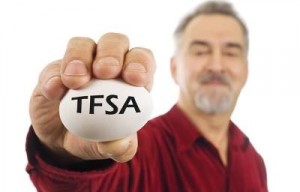Ontario Energy and Property Tax Credit (Accountant GTA)
The Ontario government introduces new energy tax credit for Ontario resident in 2011. In the 2009 Ontario Budget, the government proposed two new tax credits to replace the combined sales and property tax credits: the Ontario Sales Tax Credit and the Ontario Property Tax Credit (OPTC). These credits were part of the Tax Plan for Jobs and Growth designed to modernize Ontario’s tax system. To qualify for the (OEPTC) the person must file their taxes on annual basis by Accountant GTA.
In the 2010 Budget, the government proposed to convert the OPTC to the Ontario Energy and Property Tax Credit (OEPTC) starting with the 2010 tax year. The OEPTC would deliver almost $1.3 billion in annual support. This represents an increase of $525 million compared to the property tax credit relief provided in 2009.
To target assistance to those who need it the most, the OEPTC would be income-tested. To provide additional assistance specifically for seniors, the government is proposing to increase the income levels at which the credit begins to be reduced for seniors from those announced in the 2009 Budget. This means that more seniors would benefit from the full credit and a greater number of seniors would qualify for it.
The income thresholds for seniors would be increased as follows:
· from $20,000 to $25,000 for single seniors, and
· from $25,000 to $30,000 for senior couples.
In the 2009 Budget, the non-senior
income thresholds were raised from $4,000 to $20,000 for single people and to $25,000 for families, including single parents.
For all recipients, the OEPTC would
be reduced by two per cent of adjusted family net income over the applicable income thresholds, which would be indexed for inflation.
For non-seniors, a family or a
single person who owns or rents a home would be able to claim an energy amount of up to $200. In addition, they would be able to claim a property tax amount of $50 plus 10 per cent of their occupancy cost, to a maximum of $700. (Occupancy cost is equal to the property tax paid and/or 20 per cent of qualifying rent paid during the year.) The property tax amount would not be allowed to exceed occupancy cost. The maximum energy and property tax amounts that could be claimed would be $900. The total of these amounts would be reduced by two per cent of adjusted family net income over $20,000 for a single person or over
$25,000 for a couple or single parent.
Additional benefits would be provided to seniors. A senior family or a single senior who owns or rents a home would be able to claim an energy amount of up to $200. In addition, they would be able to claim a property tax amount of $425 plus 10 per cent of their occupancy cost, to a maximum of $825. (Occupancy cost is equal to the property
tax paid and/or 20 per cent of qualifying rent paid during the year.) The property tax amount would not be allowed to exceed occupancy cost. The maximum energy and property tax amounts that could be claimed would be $1,025. The total of these amounts would be reduced by two per cent of adjusted family net income over $25,000 for a single senior or over $30,000 for a senior couple or single parent.
For more Information:
http://www.rev.gov.on.ca/en/credit/oeptc/index.html
SAVE HST THROUGH QUICK METHOD by Accountant Brampton
The Quick Method of accounting
Quick Method should be use by the businesses who don’t have a lot of ITC credit like real estate business, truck driver, IT professional, etc by Accountant Brampton. The Quick Method is a simplified accounting option available to help small businesses calculate their net tax for GST/HST purposes. This method reduces paperwork and makes it easier to calculate GST/HST remittances and file GST/HST returns because it eliminates the need to report the actual GST/HST paid or payable on most purchases.
When you use the Quick Method, you still charge the HST at the rate of 13% HST on taxable supplies of goods and services. However, to calculate the amount of GST/HST to remit, you multiply the amount
of your GST/HST included supplies for the reporting period by the Quick Method remittance rate, or rates, that apply in your situation.
The remittance rates of the Quick Method are less than the 13% rate of tax that you charge. This means that you remit only a part of the tax that you collect, or that is collectible. Since you cannot claim input tax credits (ITCs) on most of your purchases when you use this method, the part of the tax that you keep accounts for the approximate value of the ITCs you would otherwise have claimed. On average you would pay about
8% HST of total sales including HST. For information on the different
remittance rates, see What are my Quick Method remittance rates?.
Note
Whether the Quick Method will be more beneficial for you to use than the regular method depends on your specific situation. You need register for Quick Method of Accounting with CRA before it can be use (See your accountant for more information).
For more Information:
http://www.cra-arc.gc.ca/E/pub/gp/rc4058/rc4058-e.html#P100_5211
Confusion reigns over TFSA rules as number of problem accounts rises (Accountant Brampton)
OTTAWA – contribution rules for a popular tax shelter continue to perplex ordinary Canadians, despite a year-long information blitz by the Canada Revenue Agency and the big banks. If you’re charged penalty for over contribution by CRA, it could be waived if you appeal through your Accountant at Brampton, Tax preparer at Brampton or call us at 905-794-8283. The agency sent out almost 103,000 letters to holders of tax-free savings accounts this month warning they likely over-contributed in 2010 — and now must pay additional tax. That number is up sharply from the 72,000 letters issued on June 1 last year for the same excess contribution problem in 2009. The tax shelter “is still a relatively new program and, naturally, some misunderstandings might still exist regarding the rules and may have led to inadvertent over-contributions,” said spokesman Noel Carisse. The over-contribution issue, which cropped up last year, prompted the Canada Revenue Agency to revamp its TFSA website and issue brochures and tip sheets, while the big banks made similar web changes. But thousands of Canadians are still tripping over a little-understood wrinkle about the timing of deposits.
The rule says account holders can put back the amounts they
withdraw from a TFSA only in a later calendar year. If they do so in the same year, they face a tax hit for their “over-contribution,” even though
they’re only replacing the withdrawn funds. Focus-group surveys commissioned by the agency last year indicated Canadians found the official TFSA website confusing and difficult to navigate, even after it was revamped to better highlight the over-contribution rule. Other internal reports suggested the agency’s language in describing TFSAs to the public has been unclear. Millions of tax-free savings accounts were set up after they came into effect on Jan. 1, 2009. Canadians can deposit up to $5,000 each year, and any earnings in the account attract no taxes, though deposits do not reduce taxable income as do RRSP deposits. In the campaign for the May 2 election this year, Prime Minister Stephen Harper promised to double the annual contribution limit to $10,000 once
the federal deficit is eliminated.
For more information:
http://ca.finance.yahoo.com/news/Confusion-reigns-TFSA-rules-capress-3112967324.html?x=0
Taxpayer relief measures available to Canadians affected by natural disasters (Accountant Brampton)
Ottawa, Ontario, September 1, 2011… The Honourable Gail Shea, Minister of National Revenue, would like all Canadians who were affected by the recent tornado in Goderich or were impacted by Hurricane Irene to know that the Canada Revenue Agency (CRA) has taxpayer relief provisions available to them if they are unable to meet their tax obligations because of these natural disasters, Accountant Brampton.
“My sincere sympathy goes out to the people of Goderich who were harmed by the devastating tornado that swept through the city on August 21st. I also deeply sympathize with all of those Canadians whose lives have been disturbed by Hurricane Irene. I know that your first concern is to begin to re‑build your lives, and in some cases, your homes and your businesses too.”
“I would like you to know that you have one less thing to worry about right now,” added Minister Shea. “If you cannot meet your tax obligations due to a natural disaster, you can be given special consideration by the Canada Revenue Agency.”
The CRA has taxpayer relief provisions in place that use a balanced approach to help taxpayers to resolve tax issues that arise through no fault of their own. Under these provisions, any taxpayer can apply to the CRA to have interest and/or penalties waived or cancelled in situations where they are unable to file a tax return and/or make a payment on time due to a natural disaster or other extraordinary circumstances beyond their control.
For more information:
http://www.cra-arc.gc.ca/nwsrm/rlss/2011/m09/nr110901-eng.html






